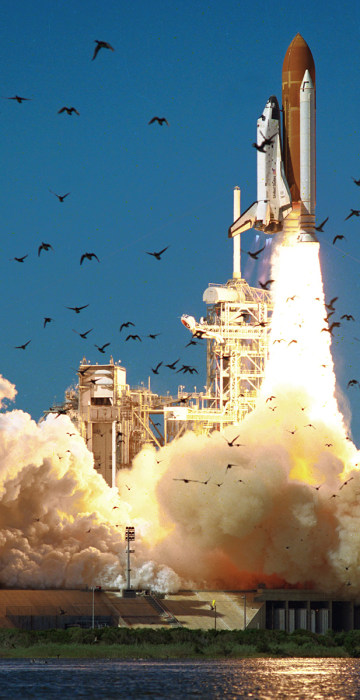
Space
Space Shuttle Challenger Disaster Devastated the Nation 30 Years Ago
Millions watched in horror as the shuttle carrying high school teacher Christa McAuliffe exploded shortly after takeoff.
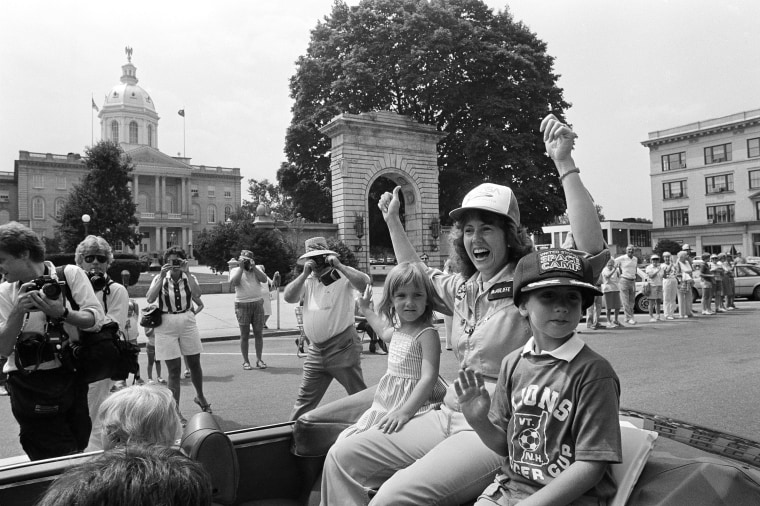
The shuttle Challenger's mission in 1986 was meant to mark a milestone in spaceflight: the first orbital voyage of an American teacher. NASA's choice for the honor was Christa McAuliffe, a social-studies teacher at Concord High School in New Hampshire. Here, McAuliffe rides past the New Hampshire State House in Concord with her daughter Caroline and son Scott, during a Lions Club parade on July 21, 1985. (Jim Cole / AP)
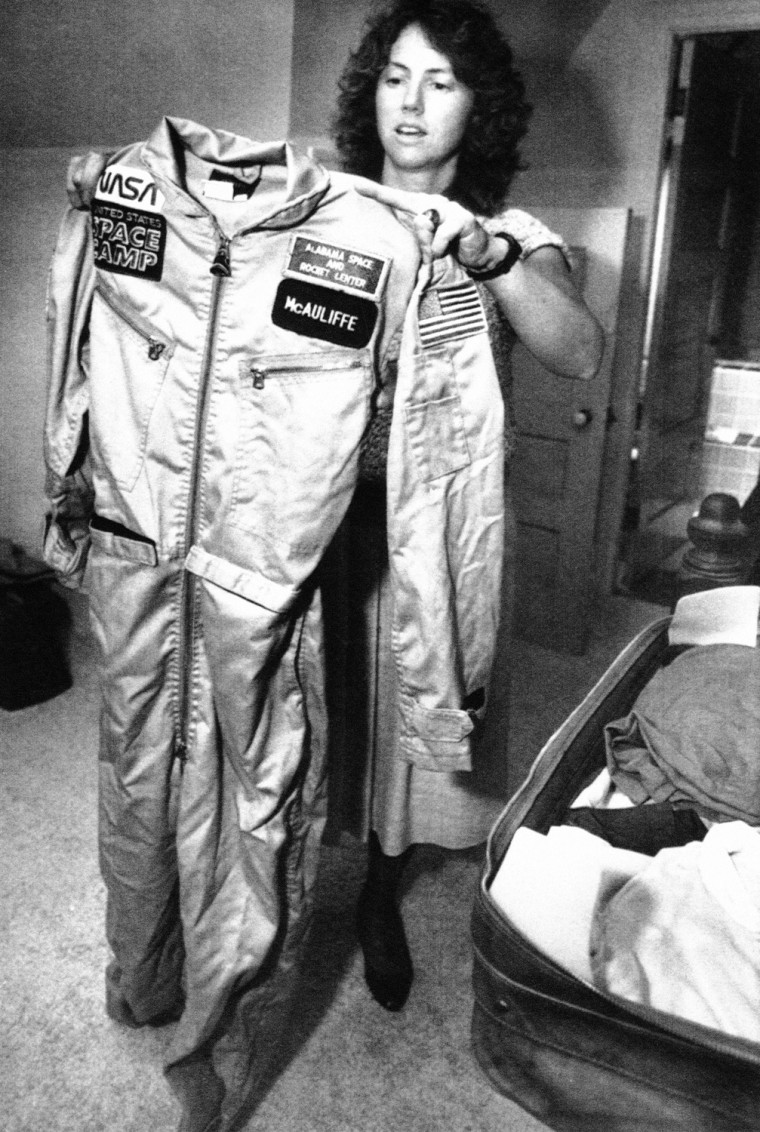
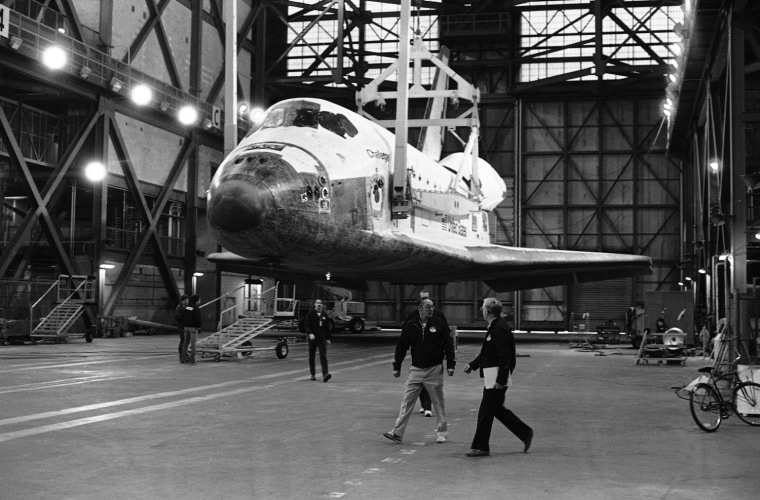
The space shuttle Challenger is transferred to the high bay of the Vehicle Assembly Building at NASA's Kennedy Space Center in Florida on Dec. 17, 1985. Inside the cavernous VAB, the Challenger orbiter was mated with its solid rocket boosters and external tank in preparation for its launch a month later.
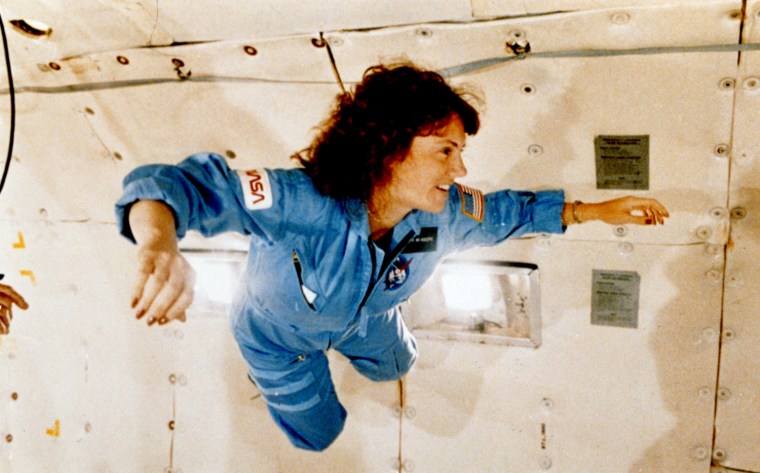
Christa McAuliffe gets a preview of microgravity on NASA's specially equipped KC-135 "zero gravity" aircraft on Jan. 13, 1986. The plane flies in a parabolic pattern that provides short periods of weightlessness. For some people, those bouts of zero-G can induce nausea - which is why the airplane was nicknamed the "Vomit Comet."
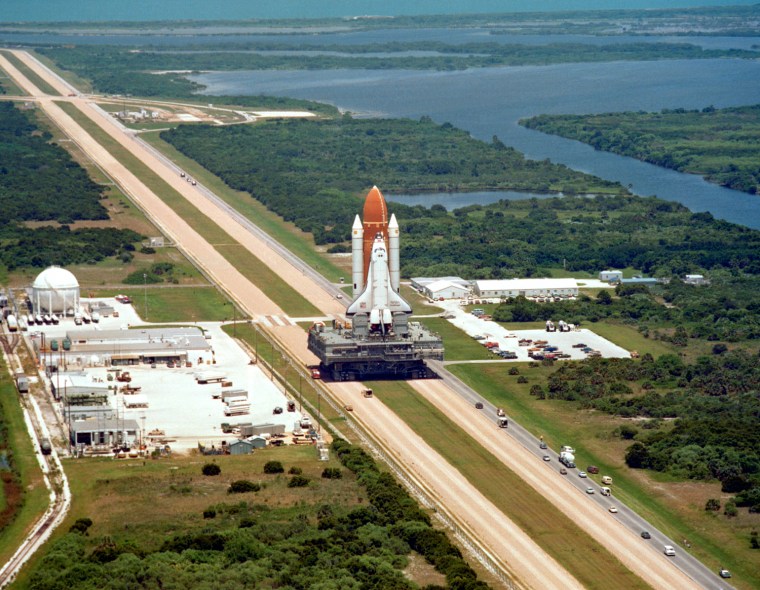
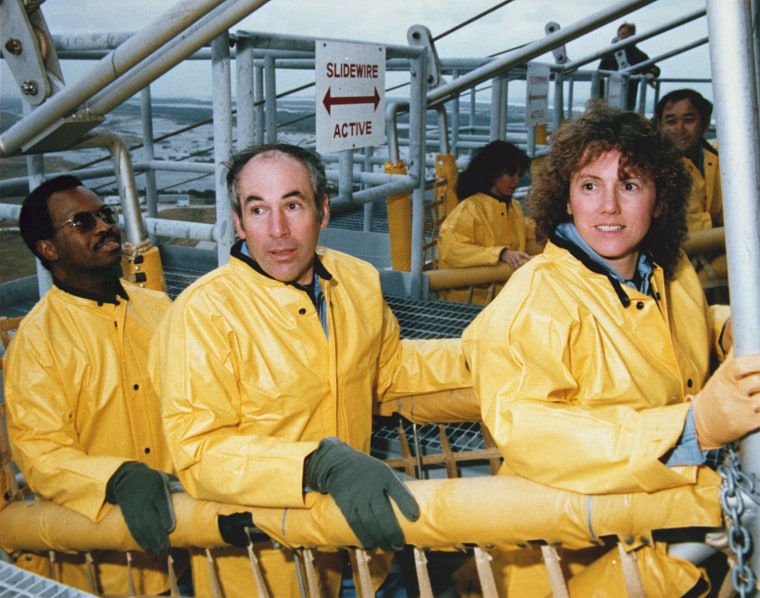
Challenger's crew members practice the procedure for escaping from the launch pad at Kennedy Space Center using slide wire baskets. From left are Ronald McNair, Gregory Jarvis and Christa McAuliffe. Directly behind them are astronauts Judy Resnik and Ellison Onizuka. The basket system was designed to take the astronauts off the pad quickly if an emergency arose just before launch.

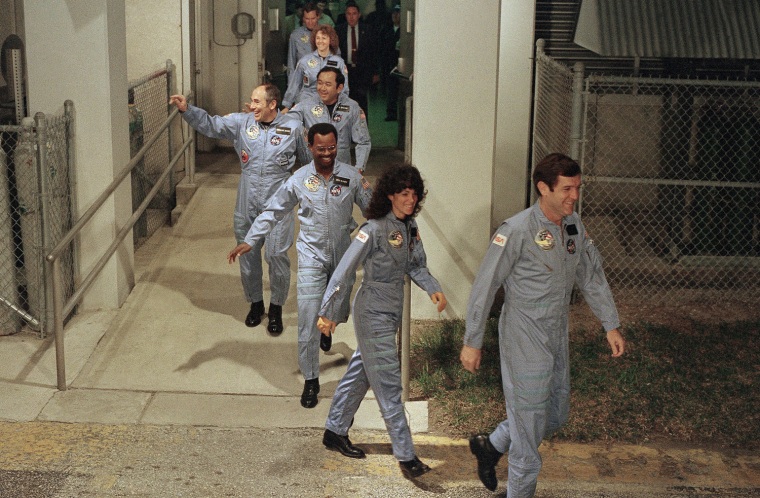
Challenger's crew members leave their quarters at Kennedy Space Center for the launch pad on Jan. 27, 1986. Commander Dick Scobee is at the front of the line, followed by Judy Resnick, Ronald McNair, Gregory Jarvis, Ellison Onizuka, Christa McAuliffe and pilot Michael Smith. NASA had to scrub the launch attempt on Jan. 27, due to high winds at the pad, and liftoff was rescheduled for Jan. 28.
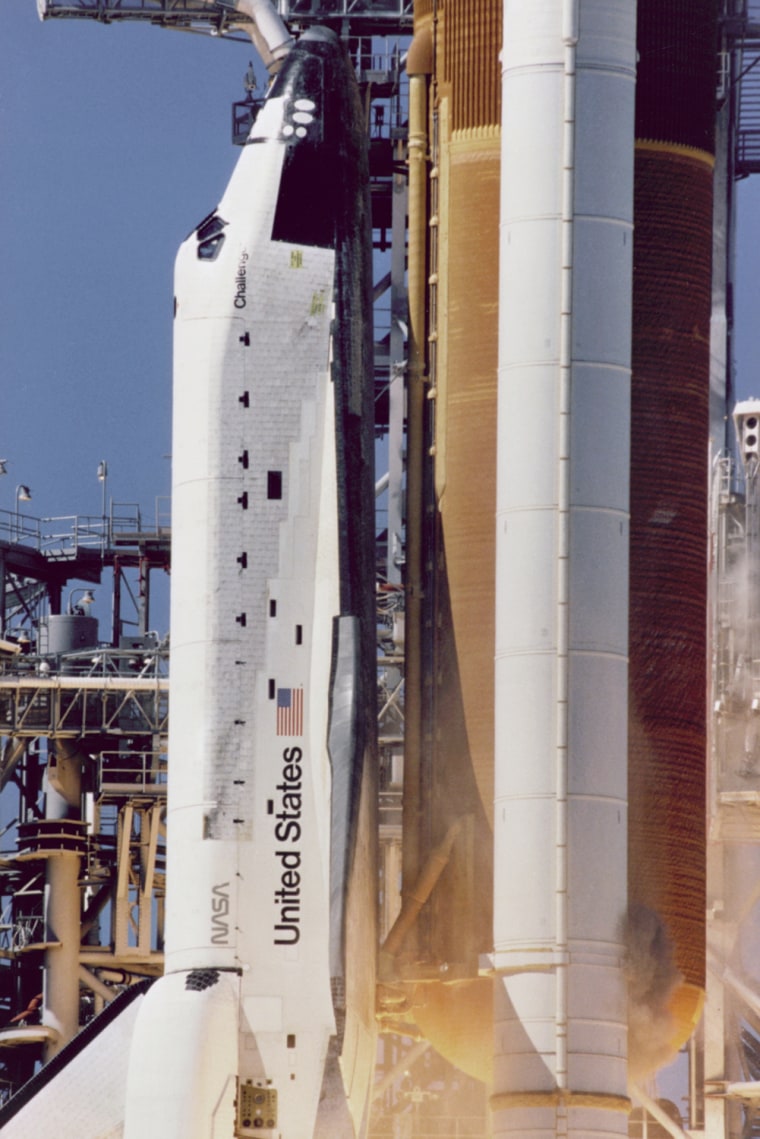
A launch-pad camera captures a close-up view of the shuttle Challenger's liftoff on Jan. 28, 1986. From this camera position, a cloud of gray-brown smoke can be seen on the right side of the solid rocket booster, directly across from the letter "U" in "United States" on the orbiter. This was the first visible sign that a breach in the booster's joint may have occurred. Investigators determined that frigid overnight temperatures caused the booster joints' normally pliable rubber O-ring seals to become hard and non-flexible. The failure of the seals caused hot exhaust gases to blow through the joints, cutting into the external fuel tank.



Classmates of the son of America's first teacher-astronaut cheer as the space shuttle Challenger lifts skyward from Launch Pad 39B on Jan. 28, 1986. Their delight turned to horror as the shuttle exploded 73 seconds into flight. The boy in the white hat and glasses at center is Peter Billingsley, the star of "A Christmas Story" and a spokesman for the young astronaut program.
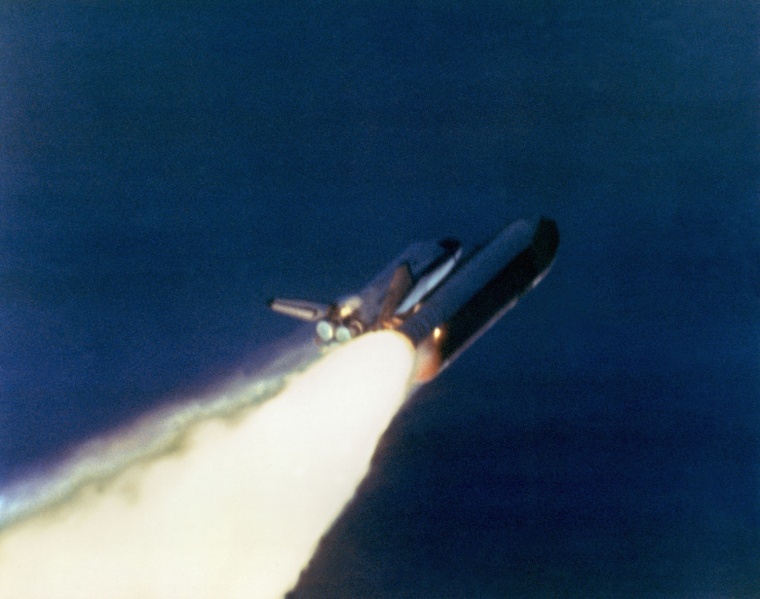
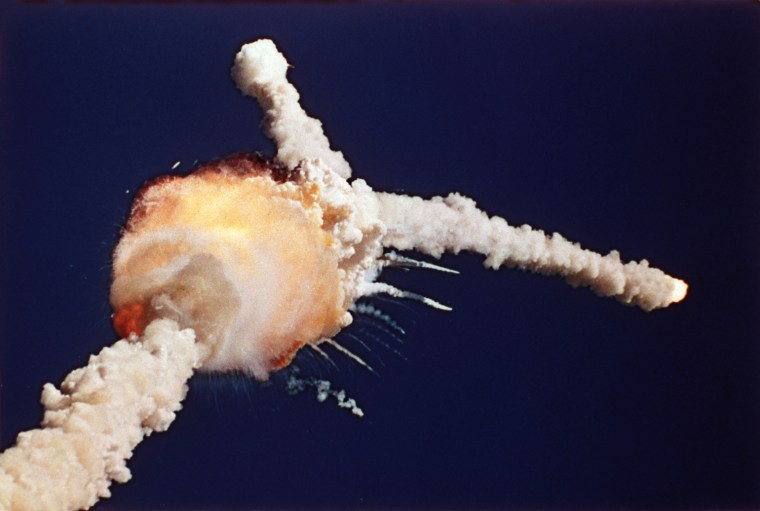
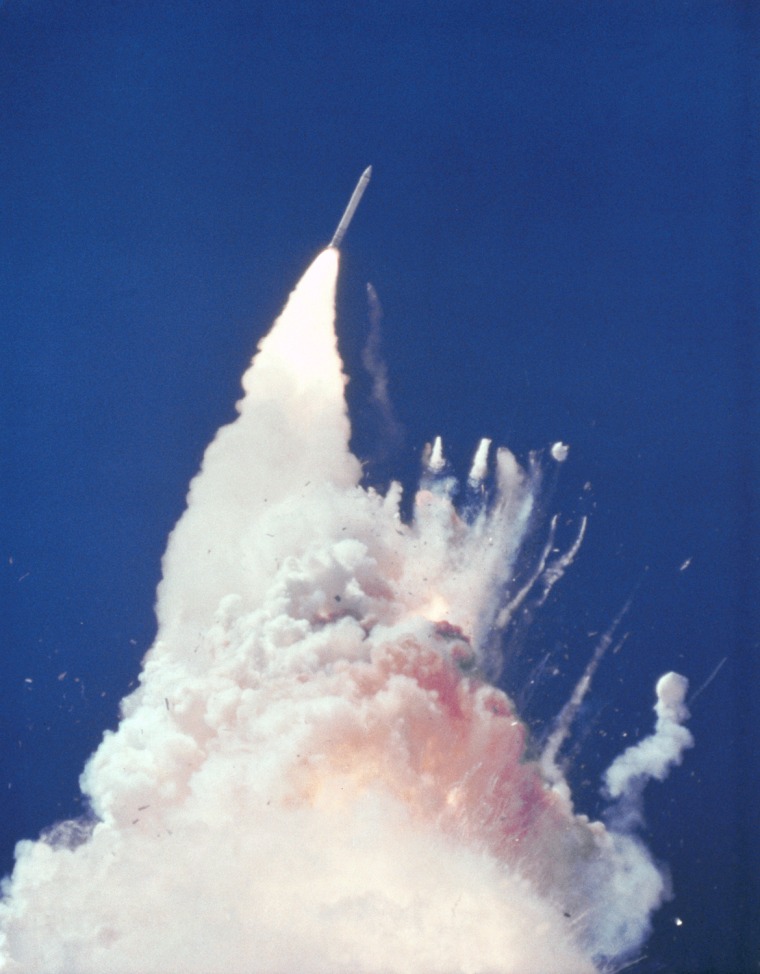
At about 76 seconds, fragments of the orbiter can be seen tumbling against a background of fire, smoke and vaporized propellants from Challenger's external fuel tank. The left solid rocket booster is still shooting skyward. A reddish-brown cloud envelops the disintegrating orbiter. The color is indicative of the nitrogen tetroxide oxidizer propellant in the orbiter's reaction control system.
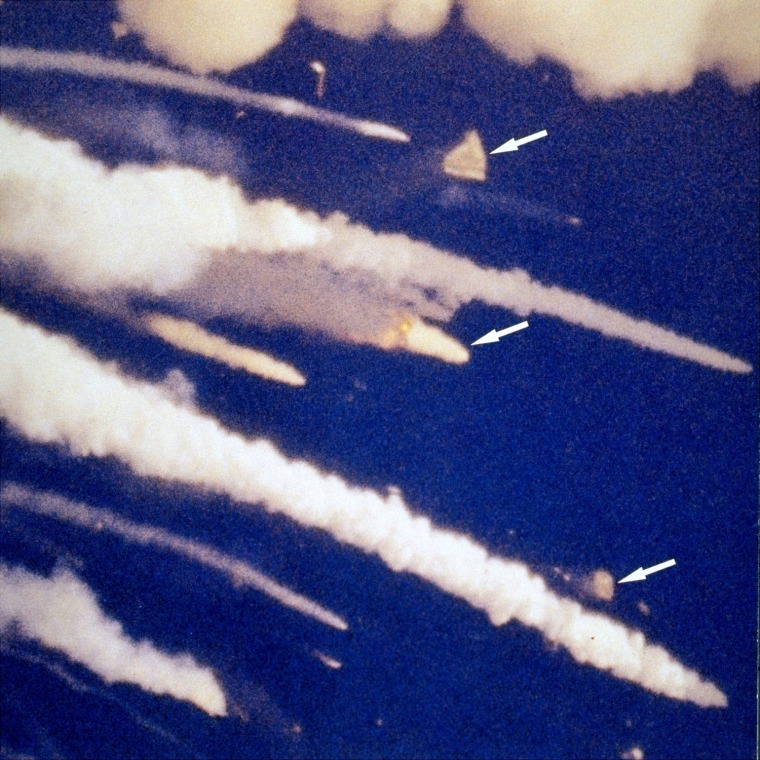
This picture, released by the presidential commission that investigated the Challenger tragedy, shows fragments of the orbiter flying away from the explosion on Jan. 28, 1986, 78 seconds after liftoff. The top arrow shows the orbiter's left wing. The center arrow shows the orbiter's main engine; and the bottom arrow shows the orbiter's forward fuselage. Investigators suggested that some of Challenger's crew members may have survived the explosion itself but died in the fall down to Earth.
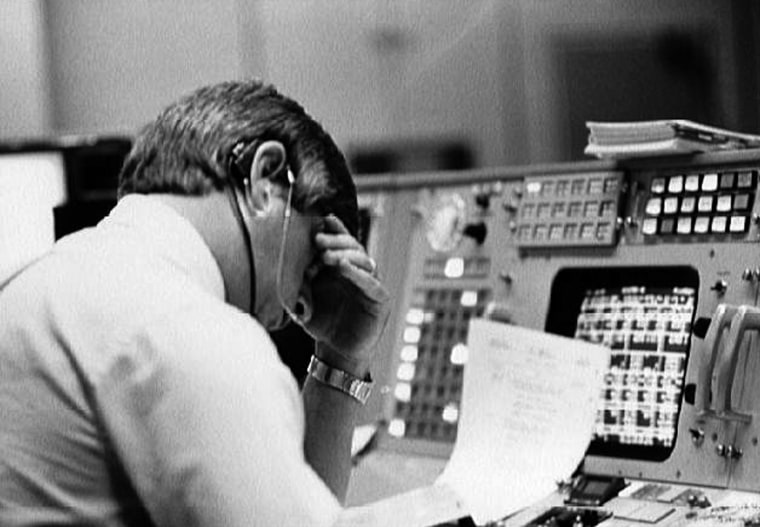
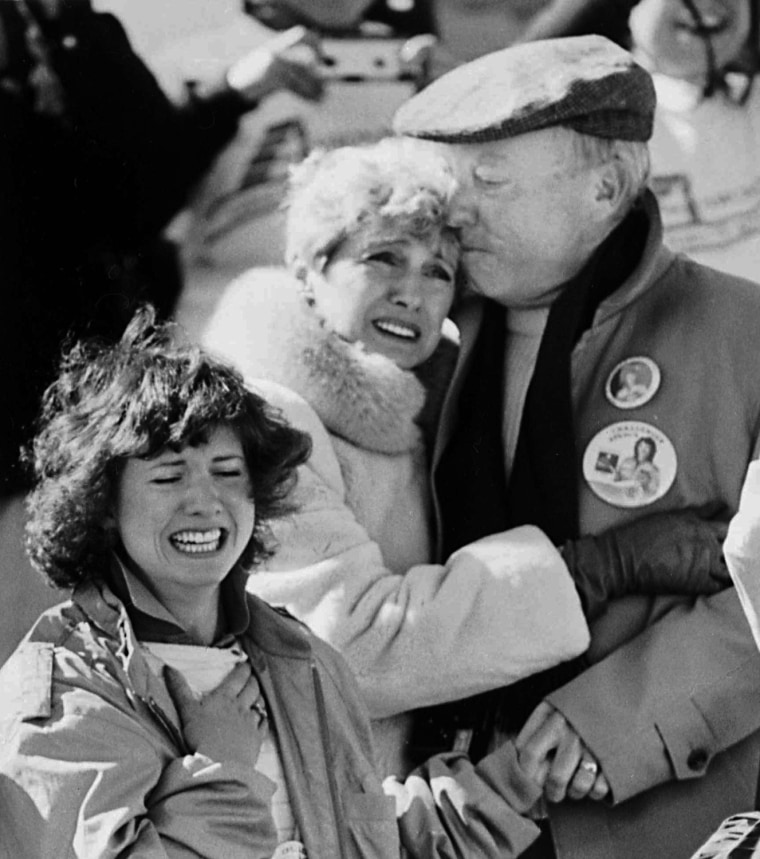

Carina Dolcino, senior class president at Concord High School, is stunned by the news that the space shuttle carrying Christa McAuliffe, one of the school's teachers, exploded after launch on Jan. 28, 1986. Students watched the launch on television sets scattered throughout the school in Concord, N.H., and a celebration had been planned for a successful liftoff.
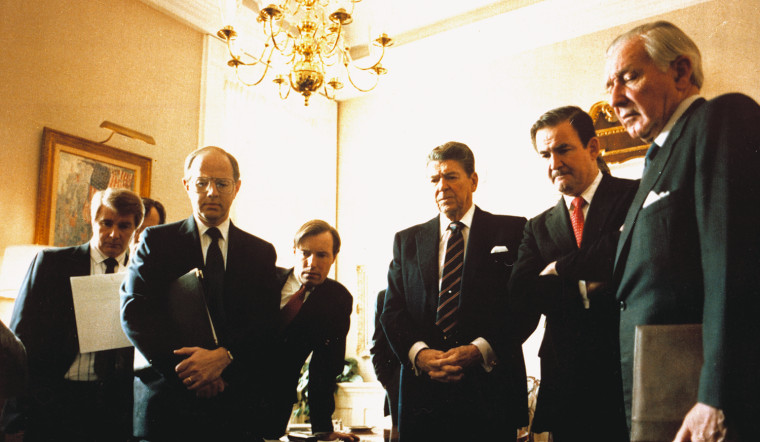
President Ronald Reagan, center, is surrounded by members of his senior staff on Feb. 3, 1986, as he watches a TV replay of the Challenger shuttle explosion at the White House. From left are Larry Speakes, deputy White House press secretary; presidential assistant Dennis Thomas; special assistant Jim Kuhn; Reagan; White House communications director Patrick Buchanan; and chief of staff Donald Regan.
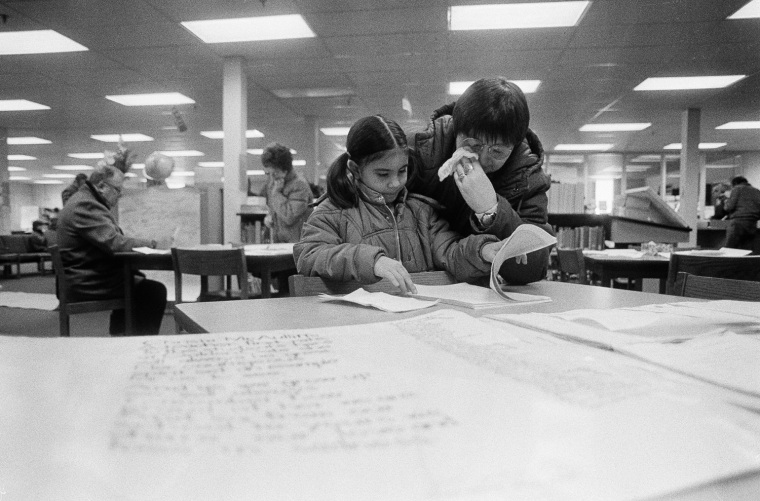
Lisa Mitten of Concord, N.H., wipes tears from her eyes as her daughter Jessica reads some of the letters of sympathy that were on display at Concord High School on Feb. 1, 1986. Hundreds of Concord residents visited the school library to see the many telegrams and letters that were sent from all over the United States.
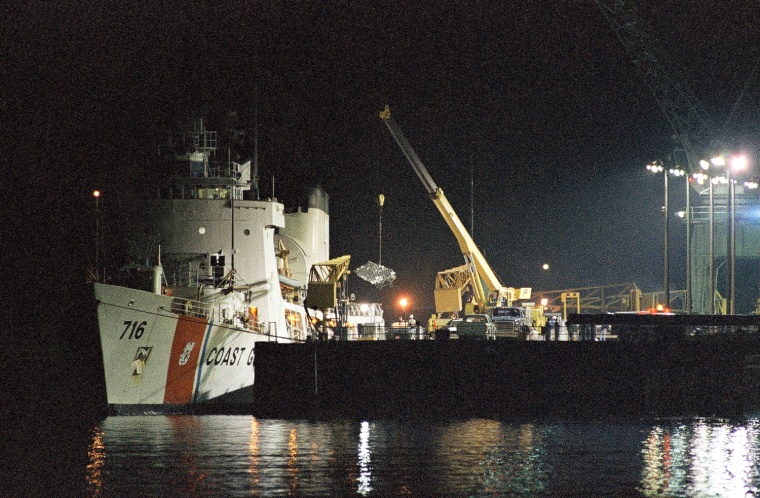
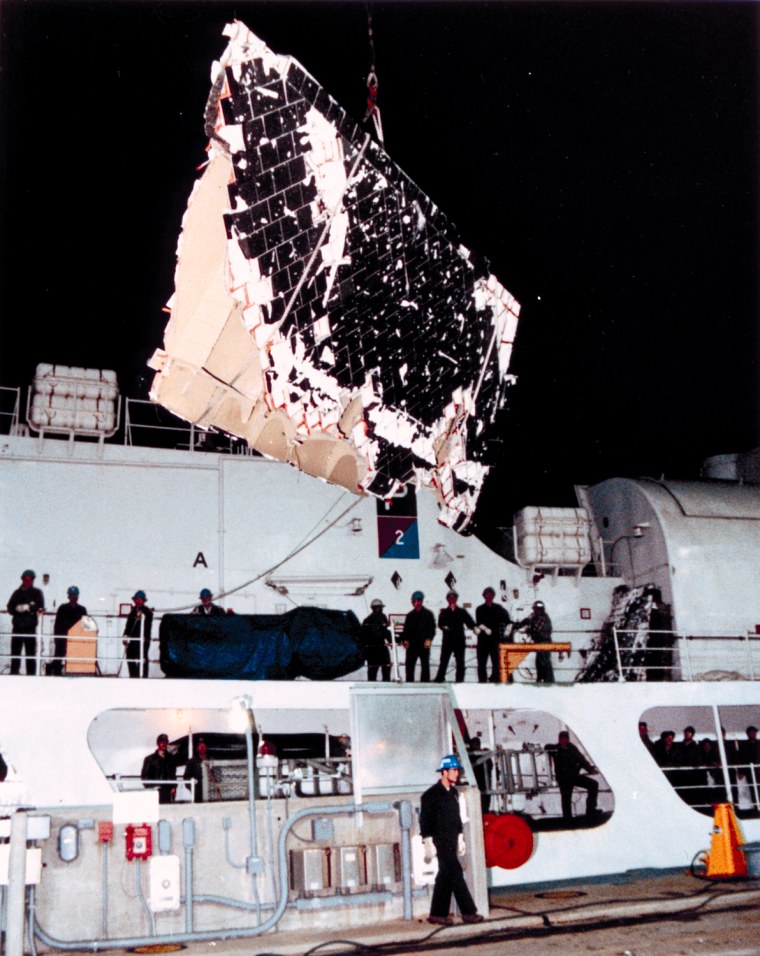
For weeks after the accident, search and recovery teams went out to retrieve Challenger debris from the Atlantic Ocean, with the help of the U.S. Coast Guard and U.S. Navy. Vessels brought pieces of debris to the Trident Basin at Cape Canaveral Air Force Station, from which they were shipped to Kennedy Space Center for investigation. The Coast Guard cutter Dallas transported this fragment of exterior tiling.
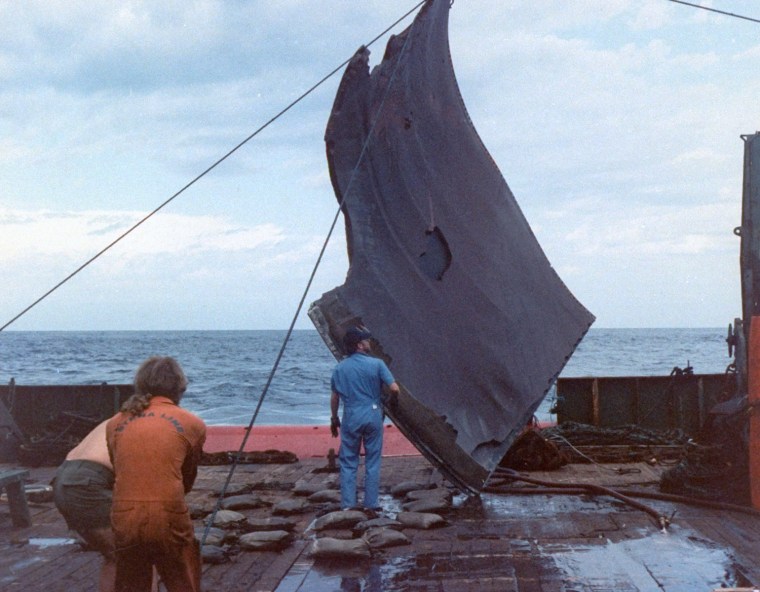
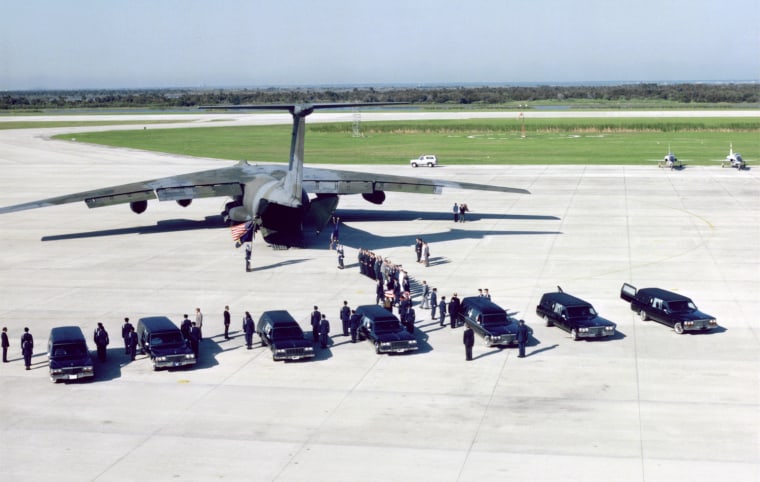
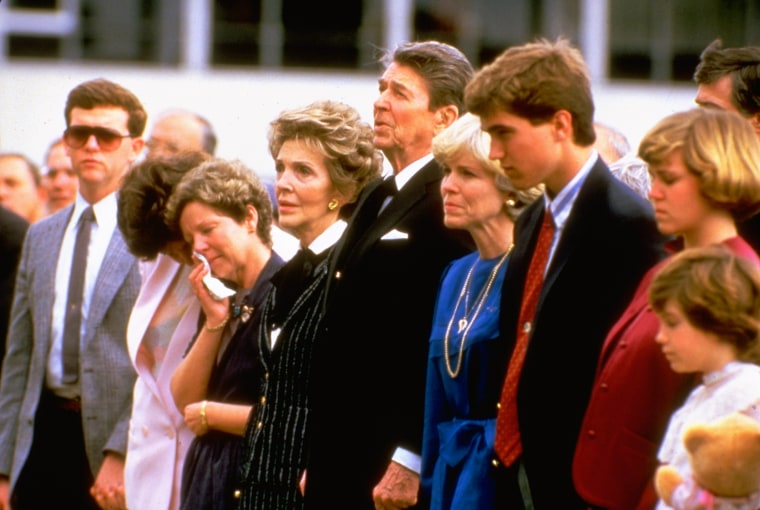
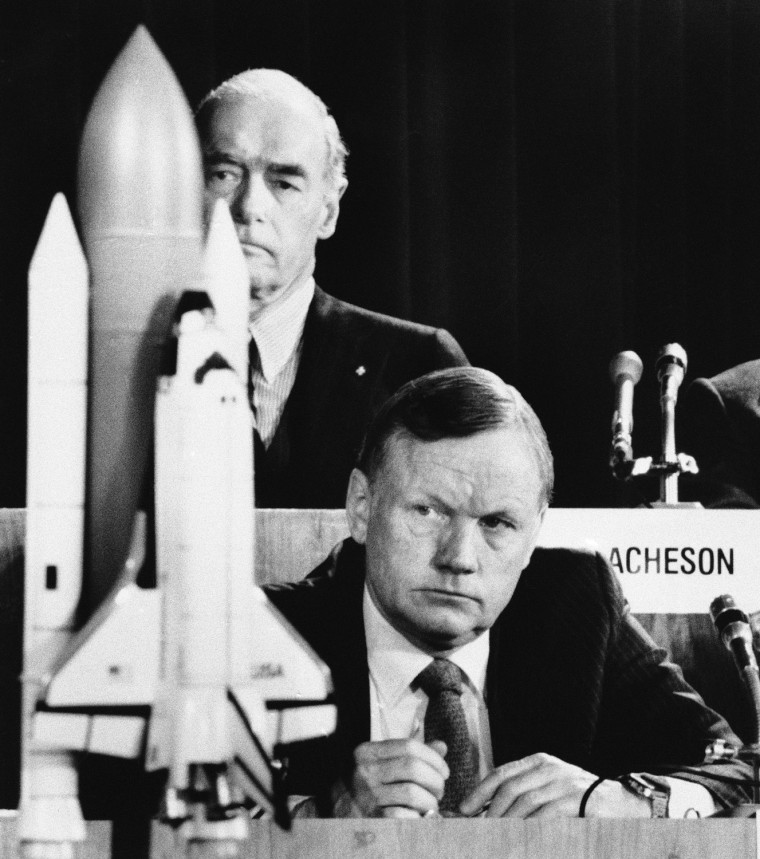
Apollo 11 moonwalker Neil Armstrong, a member of the presidential panel investigating the Challenger explosion, listens to testimony before the commission in Washington on Feb. 11, 1986. Another commission member, David Acheson, listens in the background. A model of the space shuttle sits on the table.
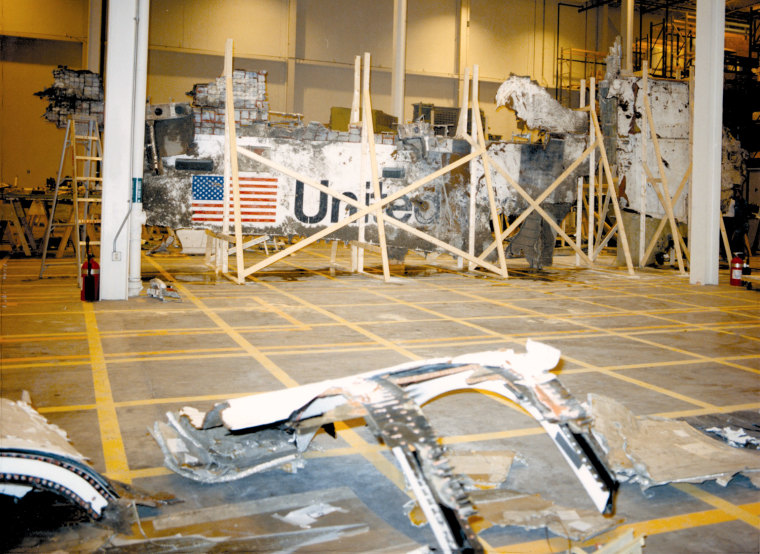
Search and recovery teams located pieces of both the left and right sidewall of the shuttle Challenger during the months-long retrieval effort that followed the explosion on Jan. 28, 1986. Heat and fire damage scarred the right sidewall. But the left sidewall, depicted here, escaped the flames and suffered only from overload fractures and deep gouge marks. The largest intact piece formed part of the payload bay sidewall and measured approximately 30 by 12 feet.
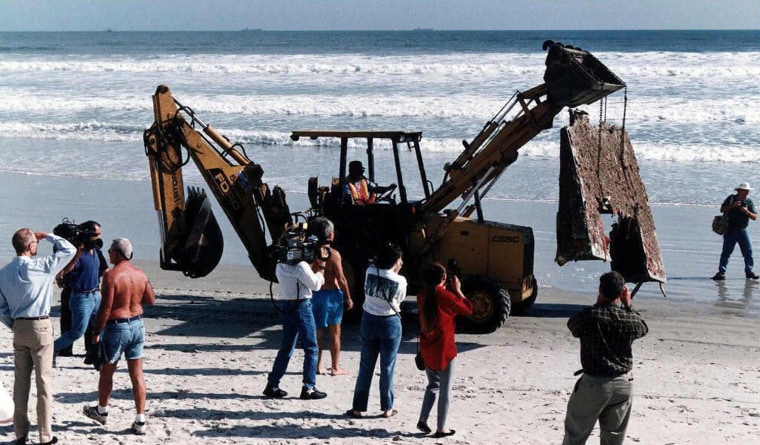
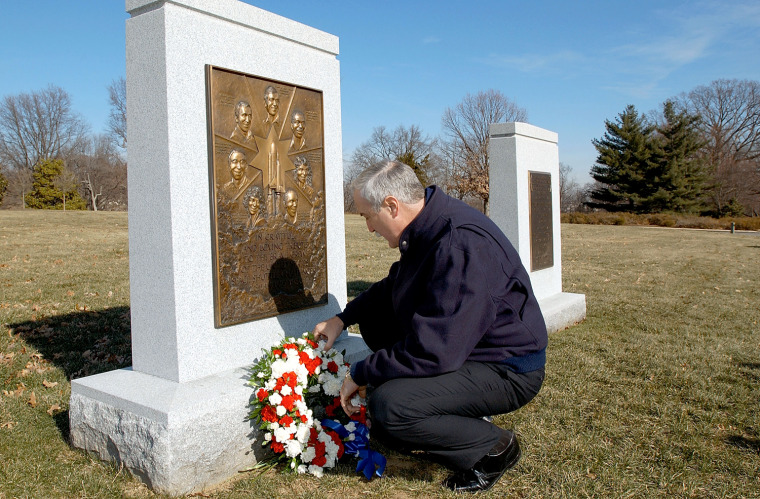
Every January, NASA recalls the Challenger explosion as well as other space tragedies on a "Day of Remembrance." Here, NASA Administrator Sean O'Keefe lays a wreath at the Space Shuttle Challenger Memorial at Arlington National Cemetery in Virginia on Jan. 28, 2003. O'Keefe also paid tribute to the three astronauts of Apollo 1 who died in a launch pad fire on Jan. 27, 1967. Sadly, seven more astronauts died just days after this picture was taken, on Feb. 1, 2003, when the shuttle Columbia broke up during re-entry.